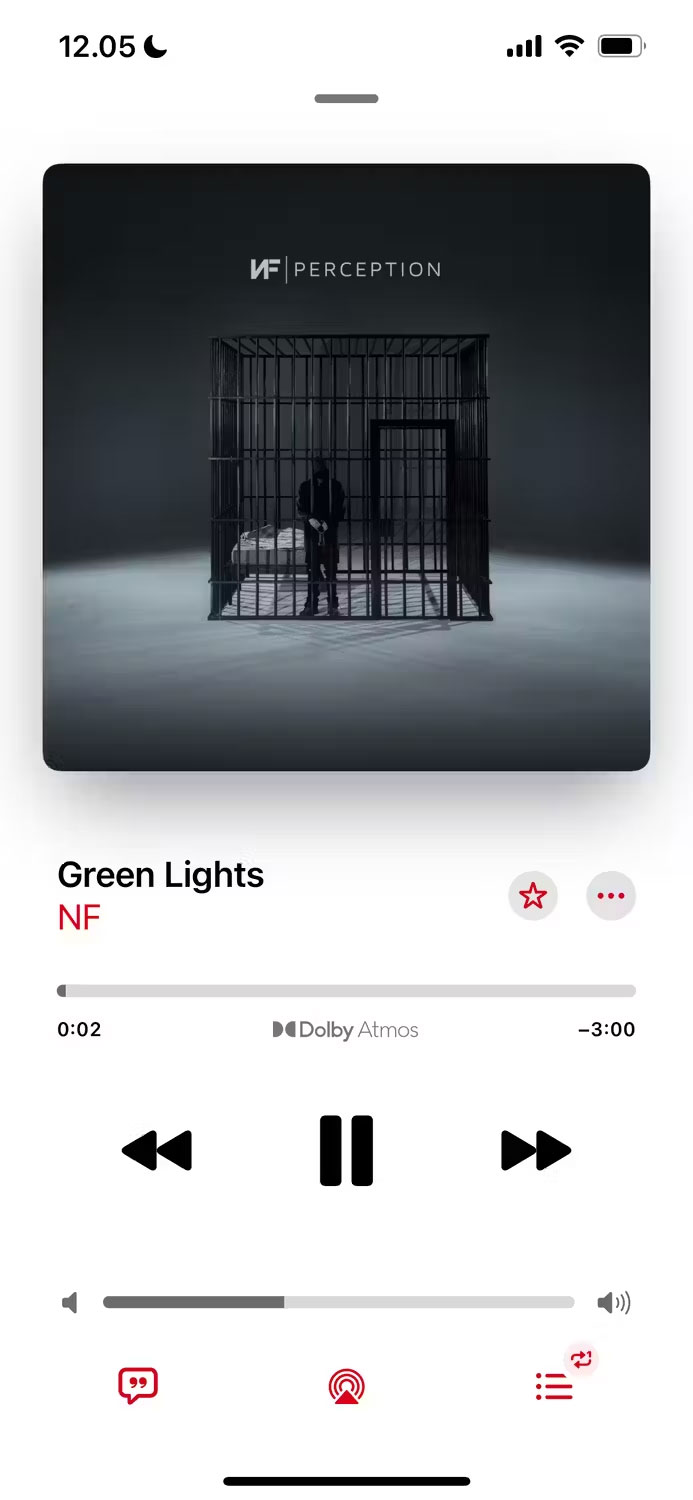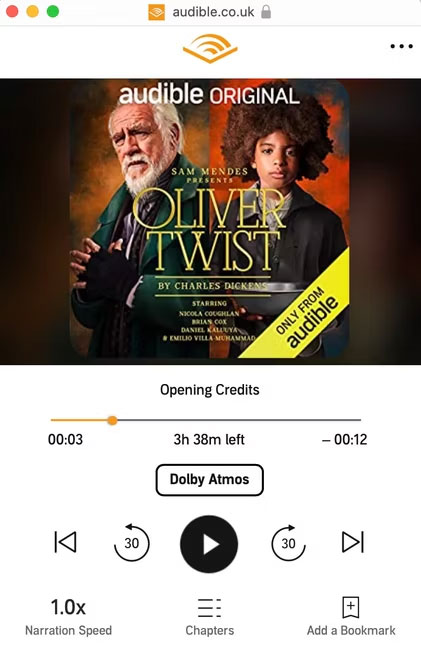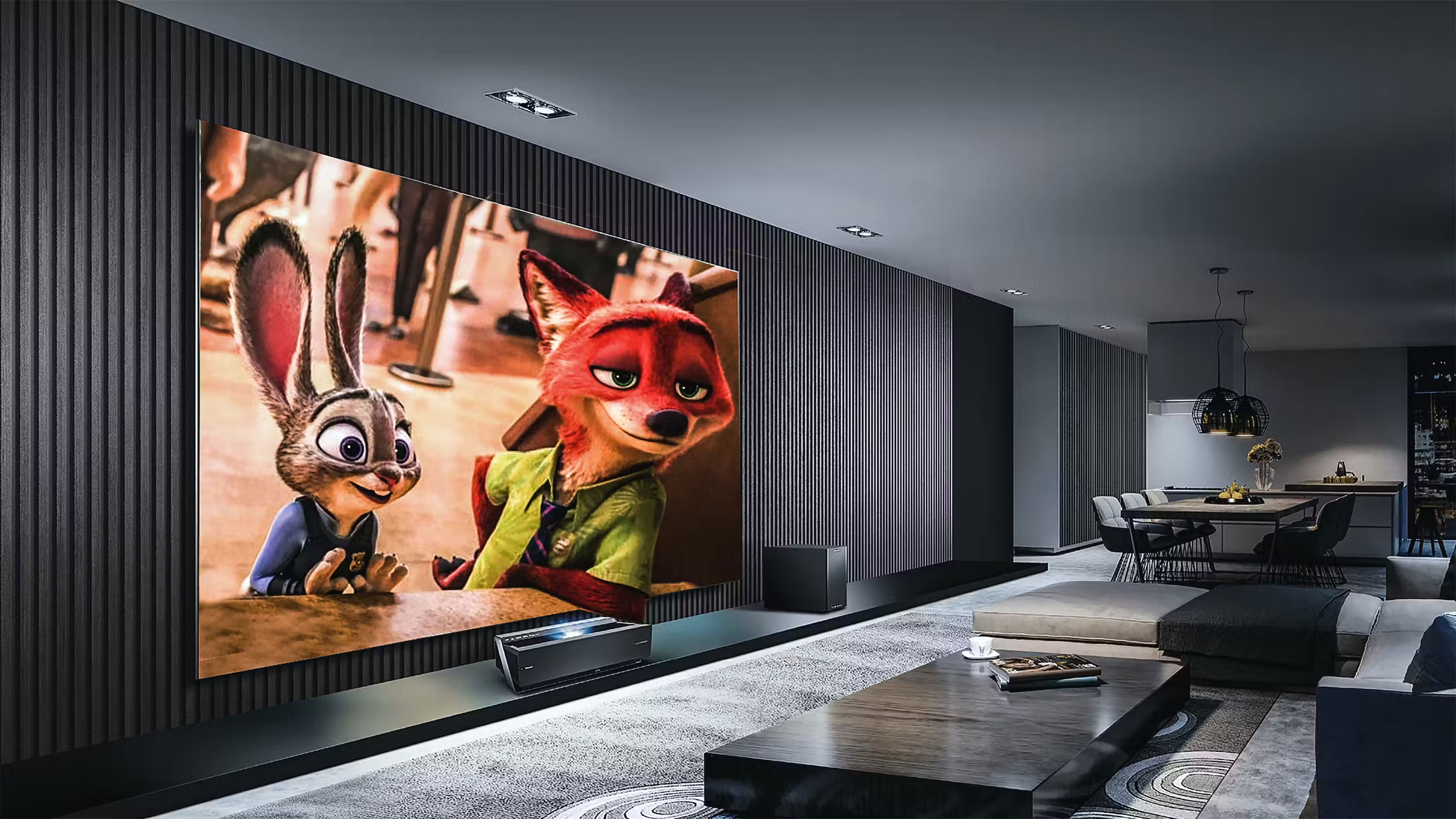What is Dolby Atmos? How does it work?
There was a time when the only way to make movies sound better was to turn up the volume. Today, audio technology has brought us immersive entertainment. Audio technology has evolved to help you feel as if you're right where the action is happening.
Have you ever sat in a movie theater, seen the distinctive Dolby Atmos text and wondered, what is Dolby Atmos? Let's find the answer through the following article!
What is Dolby Atmos?

Developed by Dolby Laboratories, Dolby Atmos is a type of surround sound technology that creates the illusion of three-dimensional objects. Using precisely set audio and pitch channels, it helps accurately represent the intended environment.
How does Dolby Atmos work?
Unlike other forms of surround sound, Dolby Atmos configures sound as an object. Audio isn't just limited to the basic channels anymore. Instead of moving vertically or horizontally, sound is an object in space.
Dolby Atmos has 128 available tracks. 10 tracks create ambient backgrounds and the remaining 118 tracks create different sound objects. Each object contains metadata that helps compatible devices understand how to process it into sound.
Where can Dolby Atmos be used?
Dolby Atmos sounds best when using as many compatible speakers as possible. Movie theaters are one of the most notable uses for the full Dolby Atmos experience, as most commercial theaters typically use all 64 speakers.
Luckily, it's still possible to experience Dolby Atmos with a less complicated system at home. Dolby Atmos at home requires an audio-visual receiver (AVR). The AVR automatically knows information about nearby speakers, such as their type and location.
Currently, Dolby Atmos for home theaters is limited to a maximum of 34 speakers. This means that the sound arrangement is not quite as precise as in a commercial theater. However, this doesn't mean you need all 34 speakers to enjoy a movie. In fact, Dolby Technologies typically recommends at least four speakers for a minimal home theater experience. There are also countless options for Dolby Atmos-compatible sound bars that can do the same job at a lower cost.
On the other hand, Dolby Atmos is also available on mobile devices but in a different way. From smartphones to headphones, you can have the same experience in the palm of your hand. Portable speakers and headphones can create a 360-degree listening experience by rendering channels into virtual binaural output.
How is Dolby Atmos different from lossless audio?
Lossless audio focuses on overall sound quality and isn't limited to surround sound. When listening to audio, you will always get clear quality. It typically consumes more data if streamed than other forms of audio, and will also take up more space on the device when downloading tracks.
While lossless audio always maintains the highest possible quality, Dolby Atmos focuses more on surround sound, making it more adaptable. But audio can be both lossless and compatible with Dolby Atmos, so it's not always a choice.
Where to find Dolby Atmos-compatible content



Today, you can stream Dolby Atmos-compatible content on platforms like Amazon Prime, Netflix, Vudu, Tidal, and Apple Music. It is also available in some video games and on Blu-ray disc.
A good rule of thumb is that movies available in 4K resolution will likely be compatible with Dolby Atmos. However, it may be limited to certain releases or subscription models. For example, the same movie available on different streaming sites may have different support for Dolby Atmos.
On the other hand, Dolby Atmos sound quality also depends on the mixing quality. While many platforms have integrated Dolby Atmos audio into their Ultra HD streaming packages, mix quality will vary between titles. Different movies or music will use different technologies to enhance the listening experience.
What are the disadvantages of Dolby Atmos?

While Dolby Atmo changed the game in commercial entertainment, Dolby Atmos for home theaters and mobile devices is a controversial place. Like all types of Hi-Fi audio systems, the success of Dolby Atmos depends a lot on its implementation (channels, placement and overall speaker quality). Without a dedicated audio engineer, setting up the 11 channels needed to get the full experience can be overwhelming for the average home theater owner.
Mobile phone technology is not as complex as the technology in full theater systems. Recently, mobile devices are using Dolby Atmos headphones, which simulate the Atmos theater experience but use stereo instead of full channels.
Why doesn't Dolby Atmos always promise quality?
In 2020, The Guardian reported an increased need for subtitles because of clarity issues for home theater viewers. Some of the main reasons cited include.
Screening rooms will often vary in size and number of speakers, and in general, it will provide a different experience than large commercial theaters.
Second, many movie theaters do not play movies at the appropriate volume level. Most theaters will show a movie at a significantly lower Dolby Atmos level if it's too loud for the majority of viewers.
Finally, unlike theaters, most home theaters don't have the same dynamic sound output. Therefore, the quality and placement of the speakers play a very important role in the results. For this reason, many home theater systems still use Dolby Digital instead.
Despite Dolby Atmos' shortcomings, its widespread adoption continues to encourage manufacturers to develop better-quality and more affordable surround sound experiences. It's already featured on platforms like Apple Music, and in the coming years, will likely become even more popular.
You should read it
- Instructions for bringing Dolby Atmos audio technology to Android devices
- 4 reasons Dolby Atmos is better than DTS:X
- Find out why iPhone doesn't have Dolby Atmos
- How to set up Spatial Sound with Dolby Atmos on Windows 10
- Steps to install Dolby Audio on Windows 11/10
- Apple Music users are about to experience Dolby Atmos and Lossless audio
 What is the Large Language Model (LLM)?
What is the Large Language Model (LLM)? What is PC AI? What makes them different?
What is PC AI? What makes them different? How are Cloud Download and Local Reinstall different?
How are Cloud Download and Local Reinstall different? What is DOCSIS?
What is DOCSIS? What is a JSON file?
What is a JSON file? What are malicious apps? How dangerous are they?
What are malicious apps? How dangerous are they?